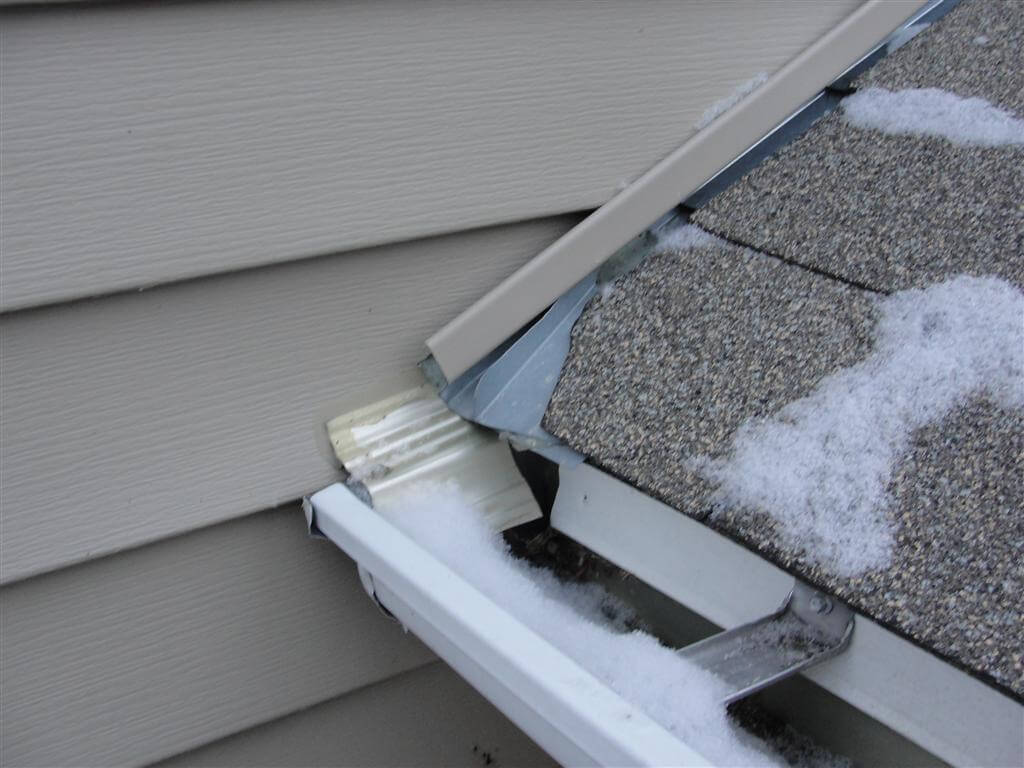The flashing is a critical component of any roofing system, as it helps prevent water from seeping into vulnerable areas and causing damage to your home’s interior and structure. When the flashing is missing on your roof, it can lead to various problems, including leaks, mold growth, and even structural issues. In this article, we will explore the significance of proper flashing installation, the potential consequences of missing flashing, and the importance of addressing this issue promptly to protect your home.

What is Roof Flashing and Its Purpose?
Roof flashing is a thin, weather-resistant material typically made of galvanized steel, aluminum, copper, or PVC. It is strategically installed in vulnerable areas of the roof, such as around chimneys, vents, skylights, and roof valleys, to create a watertight seal. The primary purpose of flashing is to redirect water away from these critical areas, preventing water intrusion and potential damage to the roof and underlying structures.
Consequences of Missing Flashing
When flashing is missing from your roof, it leaves these vulnerable areas exposed to the elements, particularly during heavy rain or snow. The consequences of missing flashing can include:
- Roof Leaks: Without flashing, water can seep into the gaps around chimneys, vents, and roof valleys, leading to roof leaks. Over time, these leaks can cause water damage to ceilings, walls, and insulation, resulting in costly repairs.
- Mold and Mildew Growth: Moisture from roof leaks can create a conducive environment for mold and mildew to thrive. Mold growth not only damages your home’s structure but also poses health risks to occupants, especially those with respiratory issues.
- Structural Damage: Prolonged water exposure can weaken the roof’s underlying structure, including rafters and roof decking. This can compromise the overall integrity of your roof and may lead to sagging or structural failure.
- Decreased Energy Efficiency: Missing flashing can also affect the energy efficiency of your home. Water intrusion can lead to insulation damage, reducing the effectiveness of your home’s thermal barrier and increasing energy consumption.
Identifying Missing Flashing
It’s essential to know how to identify missing flashing on your roof to address the issue promptly. Here are some signs that may indicate the presence of missing or damaged flashing:
- Water Stains on Ceilings: If you notice water stains or discoloration on your ceilings or walls, it could be a sign of a roof leak due to missing flashing.
- Damp or Musty Odor: A persistent musty smell in your home can indicate the presence of mold caused by water intrusion from missing flashing.
- Rust or Corrosion: Check visible flashing components for signs of rust or corrosion, as these can weaken the flashing and compromise its effectiveness.
Addressing Missing Flashing
If you suspect or identify missing flashing on your roof, it’s crucial to take immediate action to prevent further damage. Here are the steps to address missing flashing:
- Inspect the Roof: Conduct a thorough inspection of your roof to identify all areas with missing flashing or signs of damage.
- Hire a Professional: While some minor repairs can be DIY projects, addressing missing flashing is best left to professional roofing contractors. They have the expertise and tools to install flashing correctly and ensure a watertight seal.
- Repair or Replace Flashing: Depending on the damage extent, the contractor may repair or replace the missing flashing. They will use the appropriate flashing material for your roof type and apply it securely to protect vulnerable areas.
Preventative Measures for Flashing Maintenance
To avoid the issues caused by missing flashing, regular roof maintenance is essential. Here are some preventive measures to ensure the longevity and effectiveness of your roof flashing:
- Schedule Regular Roof Inspections: Get your roof professionally inspected annually to identify potential issues, including flashing problems.
- Clear Debris: Keep the roof and gutters free from debris, leaves, and other obstructions that can impede water flow and cause water to pool around flashing areas.
- Address Repairs Promptly: Notice any damage or wear on your roof or flashing? Act quickly to prevent further harm.
Conclusion:
Missing flashing on your roof is a serious issue that can lead to water damage, mold growth, and structural problems. Understanding the purpose of flashing, recognizing missing signs, and promptly addressing issues can protect your home from water damage. Regular roof maintenance and inspections are vital to preserve intact and effective flashing, safeguarding your home from the elements.



Leave a Reply